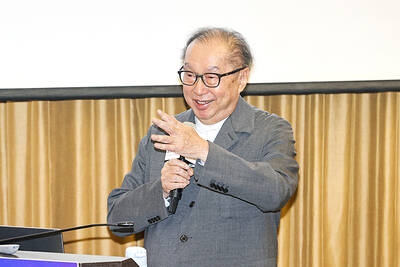The price for mainstream computer memory chips may bounce back to exceed US$1 per unit as soon as the end of this quarter, helped by Lunar New Year demand in China and a supply glut, from an 85 percent plunge over the past year, a Taipei-based market researcher said yesterday.
The chip price would also get some support from falling supply from local dynamic random access memory (DRAM) chipmakers this quarter as the nation's No.3 DRAM maker ProMOS Technologies Inc (
Coupled with rising demand in the Chinese market, "It is highly likely the price for DDR2 will rebound to exceed US$1 to US$1.2 per unit," DRAMeXchange said.
The DRAM price has plunged to US$0.93 per unit on Dec. 31, compared to US$6.32 in the beginning of last year, according to the research house.
The price decline is expected to give local companies, led by Powerchip Semiconductor Corp (
Powerchip may post record high losses of NT$7.1 billion (US$220 million) for last quarter, while its smaller rivals Nanya Technology Corp (
"Their losses may narrow in the second quarter because of improvement in DRAM price. But I do not expect the companies will return to the black anytime soon as global rivals such as Samsung Electronics Co plan to expand production this year to gain market share," Liu said.
Shares of the nation's top DRAM makers -- Powerchip, Nanya and ProMOS -- jumped 1.98 percent to 3.32 percent yesterday in the wake of 3.3 percent improvement in the spot price over the past week.
Nanya Technology and Inotera Memories Inc (
"If DRAM companies cut production, or capital spending for this year before the second quarter, the price for higher-density DDR2 1GB will have a big chance of rising 35 percent further to over US$2.5 apiece, helping those companies to return to profits," DRAMeXchange said.
The report said it would be more cost-saving for local firmss to make DDR2 1GB than DDR2 512GB and that demand for high-density memory chips was on the rise.

BYPASSING CHINA TARIFFS: In the first five months of this year, Foxconn sent US$4.4bn of iPhones to the US from India, compared with US$3.7bn in the whole of last year Nearly all the iPhones exported by Foxconn Technology Group (富士康科技集團) from India went to the US between March and last month, customs data showed, far above last year’s average of 50 percent and a clear sign of Apple Inc’s efforts to bypass high US tariffs imposed on China. The numbers, being reported by Reuters for the first time, show that Apple has realigned its India exports to almost exclusively serve the US market, when previously the devices were more widely distributed to nations including the Netherlands and the Czech Republic. During March to last month, Foxconn, known as Hon Hai Precision Industry

Taiwan Semiconductor Manufacturing Co (TSMC, 台積電) and the University of Tokyo (UTokyo) yesterday announced the launch of the TSMC-UTokyo Lab to promote advanced semiconductor research, education and talent development. The lab is TSMC’s first laboratory collaboration with a university outside Taiwan, the company said in a statement. The lab would leverage “the extensive knowledge, experience, and creativity” of both institutions, the company said. It is located in the Asano Section of UTokyo’s Hongo, Tokyo, campus and would be managed by UTokyo faculty, guided by directors from UTokyo and TSMC, the company said. TSMC began working with UTokyo in 2019, resulting in 21 research projects,

Quanta Computer Inc (廣達) chairman Barry Lam (林百里) yesterday expressed a downbeat view about the prospects of humanoid robots, given high manufacturing costs and a lack of target customers. Despite rising demand and high expectations for humanoid robots, high research-and-development costs and uncertain profitability remain major concerns, Lam told reporters following the company’s annual shareholders’ meeting in Taoyuan. “Since it seems a bit unworthy to use such high-cost robots to do household chores, I believe robots designed for specific purposes would be more valuable and present a better business opportunity,” Lam said Instead of investing in humanoid robots, Quanta has opted to invest

Ashton Hall’s morning routine involves dunking his head in iced Saratoga Spring Water. For the company that sells the bottled water — Hall’s brand of choice for drinking, brushing his teeth and submerging himself — that is fantastic news. “We’re so thankful to this incredible fitness influencer called Ashton Hall,” Saratoga owner Primo Brands Corp’s CEO Robbert Rietbroek said on an earnings call after Hall’s morning routine video went viral. “He really helped put our brand on the map.” Primo Brands, which was not affiliated with Hall when he made his video, is among the increasing number of companies benefiting from influencer